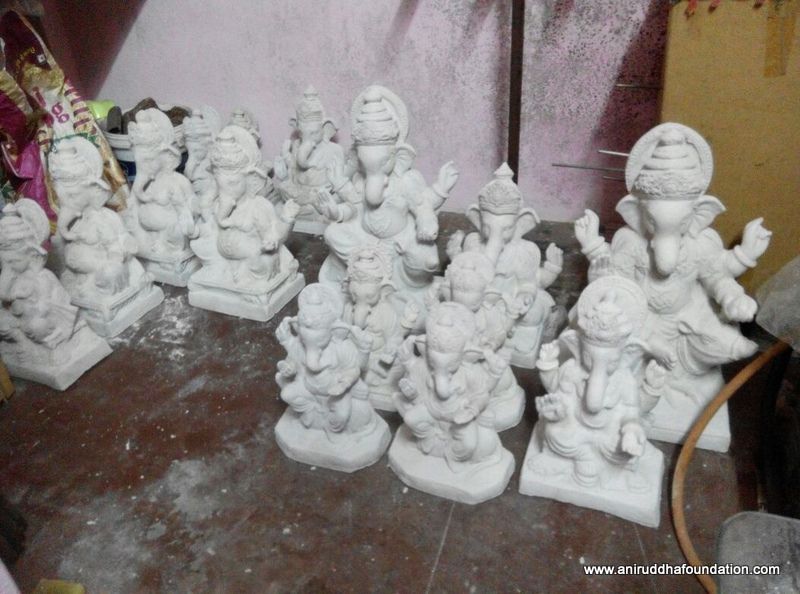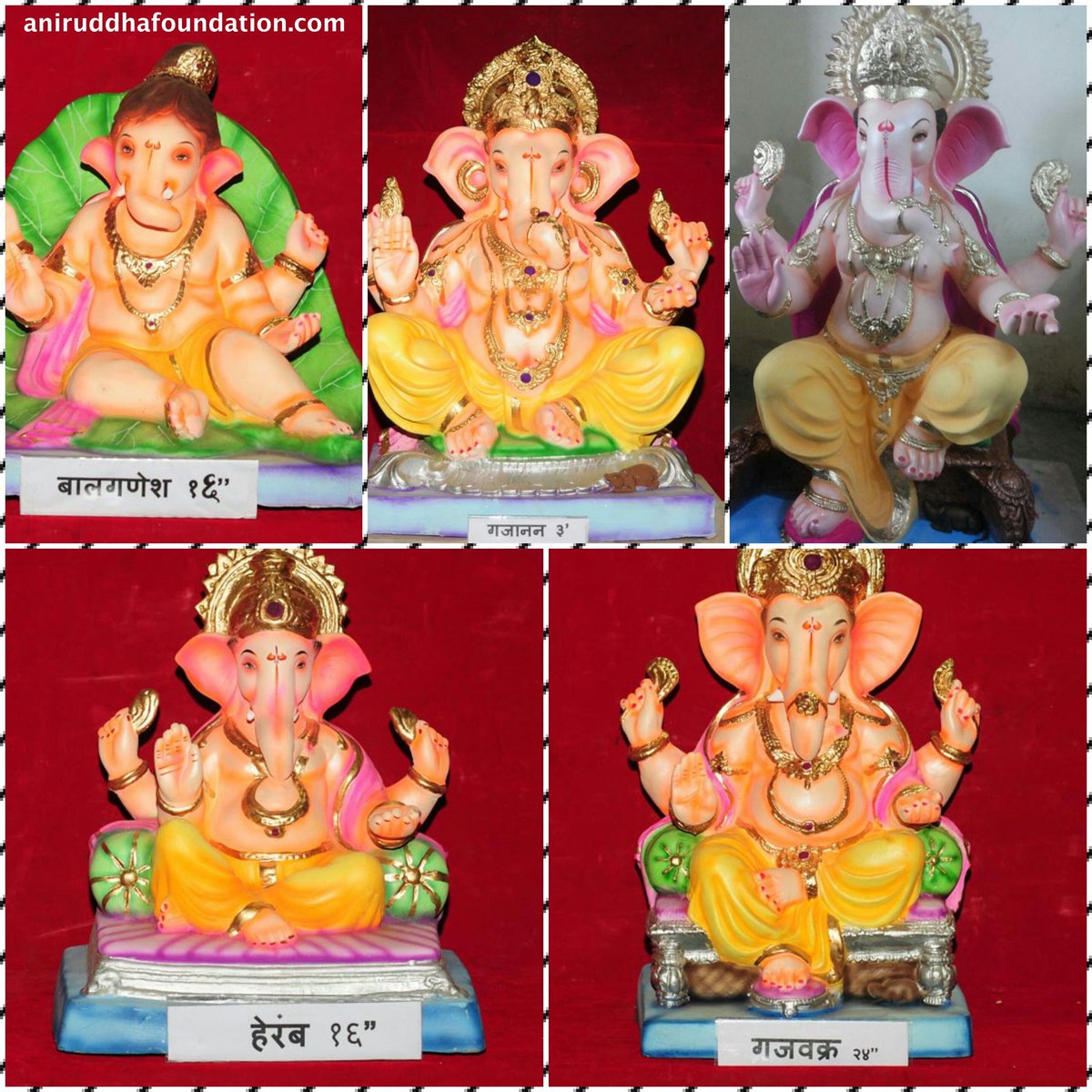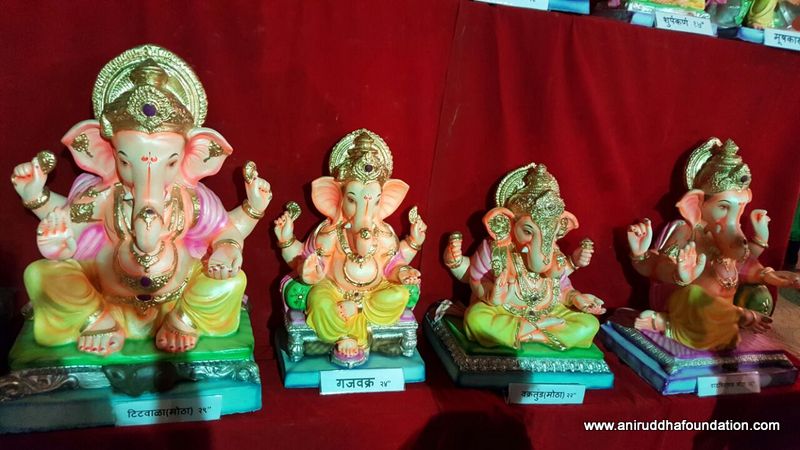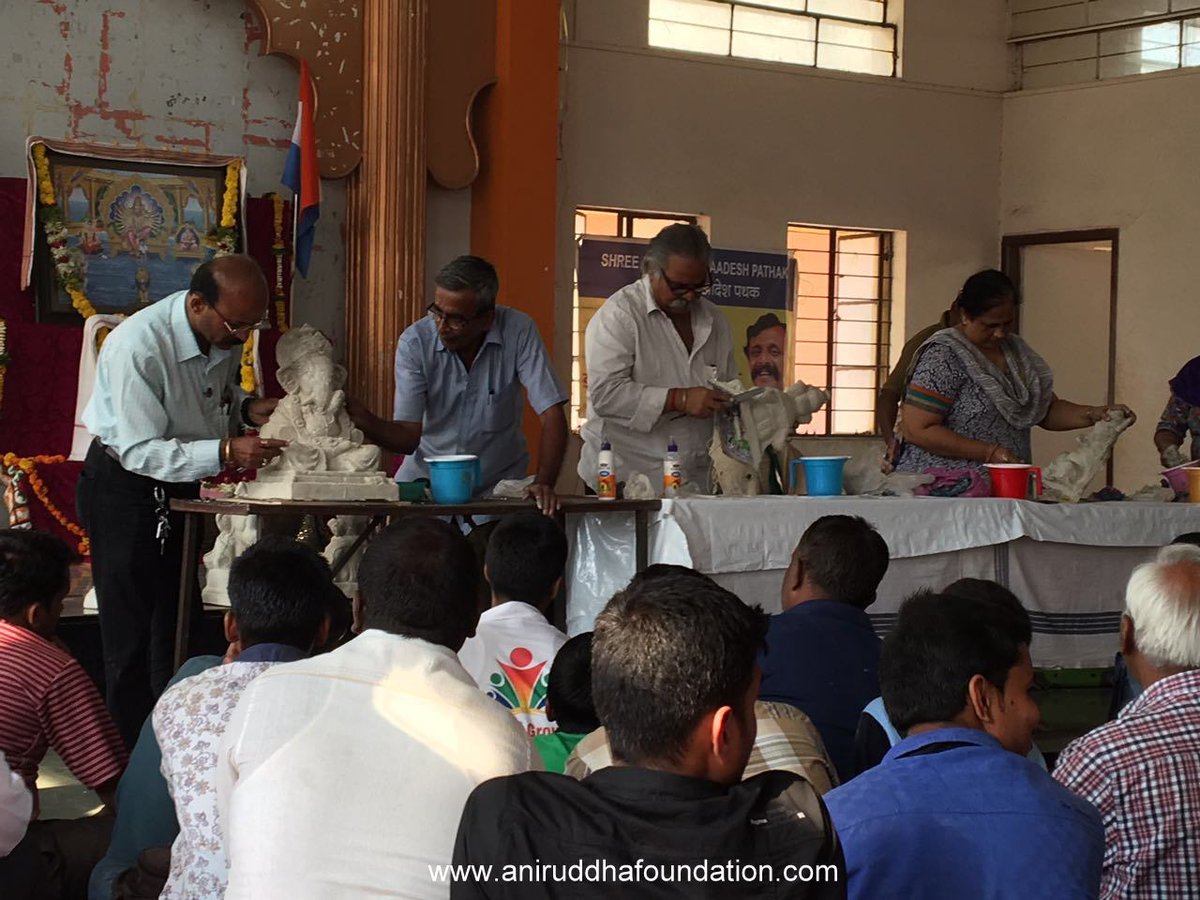
The pages of Ramnaam books are soaked in water and converted into paper pulp. This pulp thus obtained is mixed with white ink and tree-based gum. This mixture is kneaded uniformly and is placed on the mould to give it an appropriate shape and form of an idol. Once dried, it is coloured using food-based dyes. These idols, on immersion, completely disintegrate in water and do not pollute the ecosystem.
Moreover, our organisation, ‘Shree Aniruddha Upasana Foundation’ had the opportunity to patent this novel method of producing an idol. However, the organization refused to do so, thus keeping it open to the public to create awareness about the environment. With each passing year, the response to this initiative has been overwhelming.

Our organization has received appreciation from various quarters for this initiative:
1. Received a Letter of Appreciation for three consecutive years from 2010 to 2012 from The Municipal Corporation of Greater Mumbai (or BMC), under its ‘Go Green Campaign’ and ‘Environment Friendly Ganpati’ initiatives.













